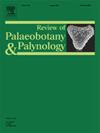An illustrated protocol for extracting palynomorphs from Early Pleistocene pollen-poor sediments using LST Fastfloat
IF 1.7
3区 地球科学
Q2 PALEONTOLOGY
引用次数: 0
Abstract
This method for extracting palynomorphs is specifically dedicated for Early Pleistocene pollen-poor carbonate or siliceous sediments in the Mediterranean, which are characterised by prolonged summer droughts. It utilises LST Fastfloat, a non-toxic, low viscosity sodium polytungstate heavy liquid. Due to its physical qualities, particularly its low viscosity, LST Fastfloat enables more efficient pollen concentration compared to other methods, including those that rely on alternative dense liquids.
This approach was applied to fluviatile and lacustrine deposits in both the western (Marseille) and eastern (Acıgöl, Kocabaş) Mediterranean. Unlike standard method, LST Fastfloat produced highly concentrated pollen residues and clear pollen slides, reducing analysis time, which is an important advantage in a labour-intensive discipline such as palynology. The primary drawback of this method is its high cost, although it is partially recyclable.
Our article is designed to be didactic and richly illustrated, featuring figures and photographs to facilitate its application, particularly for beginners. The positive results presented here may encourage researchers to sample sediments previously considered pollen-poor or devoid of palynomorphs, especially from understudied regions of major biogeographical or archaeological interest, such as the arid regions of the tropics and the Mediterranean.

利用LST Fastfloat从早更新世花粉含量较低的沉积物中提取孢异形的说明方案
这种提取地貌的方法专门用于地中海早更新世缺乏花粉的碳酸盐或硅质沉积物,其特征是夏季长期干旱。它采用LST Fastfloat,一种无毒,低粘度的多钨酸钠重质液体。由于其物理特性,特别是其低粘度,与其他方法(包括那些依赖于替代致密液体的方法)相比,LST Fastfloat可以更有效地浓缩花粉。这种方法应用于地中海西部(马赛)和东部(Acıgöl,科卡巴伊)的流质和湖泊沉积物。与标准方法不同,LST Fastfloat产生高度浓缩的花粉残留物和清晰的花粉载玻片,减少了分析时间,这在孢粉学等劳动密集型学科中是一个重要的优势。这种方法的主要缺点是成本高,尽管它是部分可回收的。我们的文章被设计成教学和丰富的插图,以数字和照片,以方便其应用,特别是对初学者。这里提出的积极结果可能会鼓励研究人员对以前被认为缺乏花粉或没有花粉形态的沉积物进行取样,特别是来自主要生物地理或考古兴趣的研究不足的地区,如热带和地中海的干旱地区。
本文章由计算机程序翻译,如有差异,请以英文原文为准。
求助全文
约1分钟内获得全文
求助全文
来源期刊
CiteScore
3.50
自引率
21.10%
发文量
149
审稿时长
6 months
期刊介绍:
The Review of Palaeobotany and Palynology is an international journal for articles in all fields of palaeobotany and palynology dealing with all groups, ranging from marine palynomorphs to higher land plants. Original contributions and comprehensive review papers should appeal to an international audience. Typical topics include but are not restricted to systematics, evolution, palaeobiology, palaeoecology, biostratigraphy, biochronology, palaeoclimatology, paleogeography, taphonomy, palaeoenvironmental reconstructions, vegetation history, and practical applications of palaeobotany and palynology, e.g. in coal and petroleum geology and archaeology. The journal especially encourages the publication of articles in which palaeobotany and palynology are applied for solving fundamental geological and biological problems as well as innovative and interdisciplinary approaches.

 求助内容:
求助内容: 应助结果提醒方式:
应助结果提醒方式:


